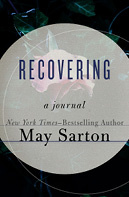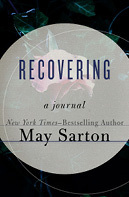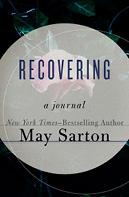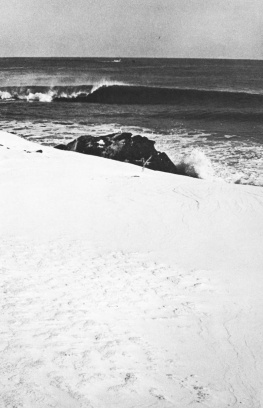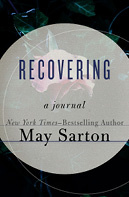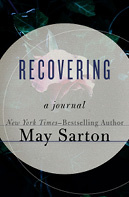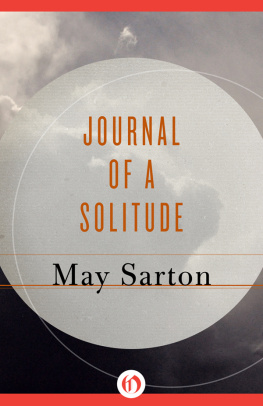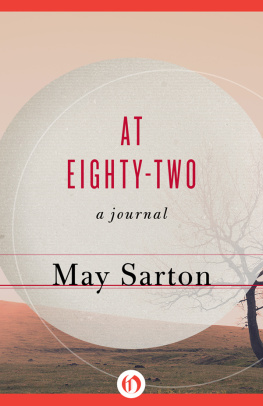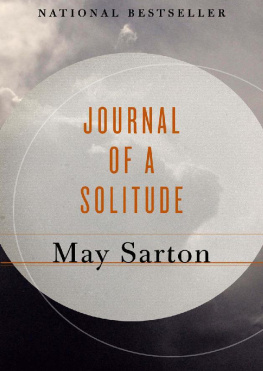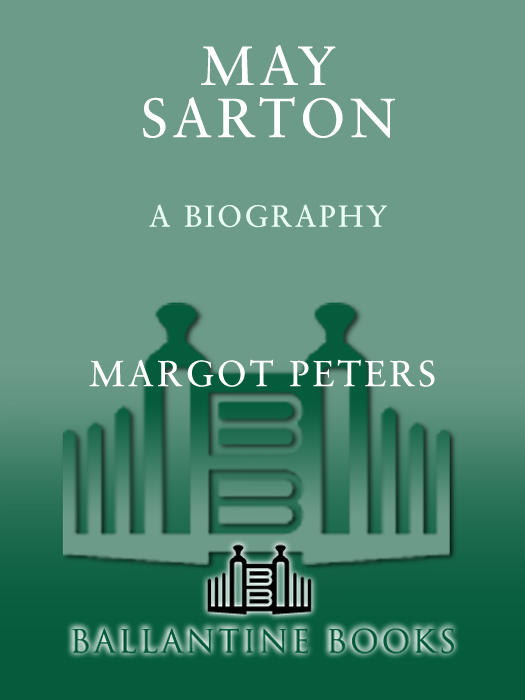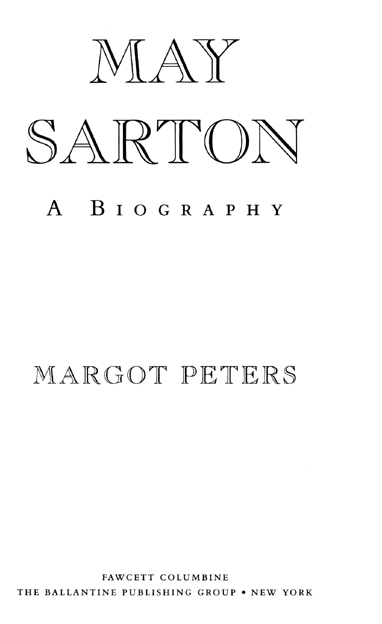ALSO BY MARGOT PETERS
Charlotte Bront: Style in the Novel
Unquiet Soul: A Biography of Charlotte Bront
Bernard Shaw and the Actresses
Mrs. Pat: The Life of Mrs. Patrick Campbell
The House of Barrymore
A FAWCETT COLUMBINE BOOK
PUBLISHED BY THE BALLANTINE PUBLISHING GROUP
Copyright 1997 by Margot Peters
All rights reserved under International and Pan-American Copyright Conventions. Published in the United States by The Ballantine Publishing Group, a division of Random House, Inc., New York, and simultaneously in Canada by Random House of Canada Limited, Toronto.
http://www.randomhouse.com
Library of Congress Catalog Card Number: 98-96017
eISBN: 978-0-307-78853-5
This edition published by arrangement with Alfred A. Knopf, Inc.
v3.1
Contents
FOR P.R.J.
Acknowledgments
The bulk of May Sartons papers are in the Berg Collection of the New York Public Library. My thanks to Philip Milito, technical assistant at the Berg, for his assistance over the years. I also worked with a considerable archive of material at Sartons home in York, Maine, much of which will go to the Berg Collection and to Westbrook College in Portland. I am also grateful for the assistance of Elizabeth Joffrion, archivist at the Archives of American Art, Smithsonian Institution; John Lancaster, curator of special collections, Amherst College Library; Patricia C. Willis, curator of American literature, and Alfred Mueller, public services assistant, the Beinecke Rare Book and Manuscript Library, Yale University; Cathy Henderson, research librarian, the Harry Ransom Humanities Research Center, the University of Texas at Austin; Patricia J. Albright, assistant archives librarian, Mount Holyoke College Library; Carolyn A. Davis, reader services librarian, Syracuse University Library; and Leo M. Dolenski, Mariam Coffin Canaday Library, Bryn Mawr.
For their kind permission to quote from letters, very special thanks to Eric Dubois (Eugnie Dubois), Professor Carolyn G. Heilbrun (Carolyn G. Heilbrun), Francis Huxley (Sir Julian and Lady Huxley), Mrs. Robert Woods Kennedy (Edith Forbes Kennedy), Jean T. Kroeber and Graham R. Taylor Jr. (Katharine Taylor), Elena Levin (Harry T. Levin), Margot Lieberman (Jean Clark Lieberman), Ruth Limmer (Louise Bogan), Morgan Mead (Morgan Mead), Eric F. Menoyo, Palmer & Dodge (Professor Cora DuBois), William Rukeyser (Muriel Rukeyser), Helen Sheehy (Eva Le Gallienne), Joy Greene Sweet (Katrine Greene), Eric Swenson (Eric Swenson), Timothy Matlack Warren (Judith Matlack), and Mrs. D. Bradford Wetherell Jr. (Anne Thorp).
I am grateful for the invaluable help of May Sartons many friends, acquaintances, associates, and others: Page Ackerman, Molly Howe (Mrs. Faneuil) Adams, Theodore Adams, Joanna Hawthorne Amick, Abigail Avery, Charlotte Bouton Barnaby, Barbara Barton, Professor Walter Jackson Bate, Professor Brian Beck, Dr. Eric Berger, Alan Best, the late Eleanor Blair, Lee Blair, Claire Bolder, William Theo Brown, Mrs. Lillian Budd, Jean P. Burden, Horace Colpitts, Honor Conklin, Helen Storm Corsa, Catherine D. David, Linda H. Davis, Bradford Dudley Daziel, Eric M. and Denise Dubois, Amanda (Mrs. Philip) Dunne, William B. Ewert, Hermann and Kate Field, Christine Fisher, Vincent Frazzetta, Dean and Sylvia Frieze, Dr. James Gilroy III, Laura Graham, Professor Ray Griffith, Doris Grumbach, Jeannette S. Guildford, Edythe Haddaway, Beverly Hallam, George R. Hanna, Judith Harrison, Sir William Hawthorne, Linda Herbert, Marcie Hershman, J. Parker Huber, Constance Hunting, John Hurley, Eleanor Newman Hutchens, Francis Huxley, Professor S. Jackman, Beulah E. Jenkins, Nancy P. Jordan, Mary B. (Mrs. Robert Woods) Kennedy, Professor Karl and Jean Taylor Kroeber, Ethel Kurland, Jane P. Leonard, Elena (Mrs. Harry T.) Levin, Jacqueline Limbosch, Norman Lloyd, Dr. Patricia Locuratolo, Evangeline Maginnis, Charlotte Mandel, Jerre Mangione, Janet Mann, Morgan Mead, Hugh S. Moorhead, Victoria T. Murphy, Professor Andrea Musher, Jack Nelson, Janice Oberacker, Deborah Pease, Margaret W. Pepperdene, Eleanor Perkins, Richard Pipe, Naomi Pritchard, Charlotte Radintz, Lucy Barry Robe, Helene J. Rodar, Margaret Roets, Karen Saum, David G. Selover, Susan Sherman, Judi Siegfried, Morris Simon, Mary-Leigh Smart, Polly Thayer (Mrs. Donald) Starr, Joy Greene Sweet, Eric Swenson, Graham R. Taylor Jr., Professor Michel and Huguette Thiery, Margaret Vaughan, Dorothy Wallace, Frances (Mrs. D. Bradford) Wetherell Jr., Martha Wheelock, Anne Woodson, Warren Keith Wright, and Marilyn J. Ziffrin. My gratitude as well to Dinah, Elspeth, and Monica.
Very special thanks to Timothy Matlack Warren, Judith Matlacks nephew and May Sartons personal representative, and to Phyllis Warren for their generous help; to Carolyn G. Heilbrun, May Sartons literary executor, for her encouragement and collegiality; and to Margaret Whalen and Barbara Martin, whose hospitality, assistance, and friendship assisted so materially in the writing of this biography.
I am very grateful to Professor Rebecca Hogan, the University of Wisconsin-Whitewater, who read the entire biography in manuscript and offered detailed comments and insights.
Loving thanks to Peter Ridgway Jordan and Elsie McCullough for their scrupulous reading of the manuscript.
To Victoria Wilson, my editor, warm thanks for her wise and friendly support. Many thanks, too, to her assistant, Lee Buttala, for his good care.
Finally, my best thanks to May Sarton, who authorized me as her biographer. Like most famous people, I suspect, May both desired and feared a biography. Yet, though far from well, she entered into the project wholeheartedly, not only corresponding with me, sending me her books, and providing introductions to friends, but granting me more than fifty hours of interviews over the last four years of her life as well as permission to quote freely from her published and unpublished writing. I treasure the fact that she looked forward to our talks, which became increasingly frank, despite my warning that the biography would be warts and all. She was, au fond, a woman of spirit and fortitude. I am glad to have known her.
Prologue
M ay Sartonpoet, novelist, journal writer, feminist, and lesbianis speaking on campus, any campus during the 1970s, anywhere in the United States. Electricity charges the air. For the first time since the feminist movements of the nineteenth century, women are listening to other womennot to mentalk about themselves. For her frankness and intimacy, Sarton has won more fans than perhaps any other contemporary American woman writer.
She is a striking woman in her sixties: short, curly white hair; strong, classic face; black horn-rims emphasizing the pallor of unlined skin; bright lipstick. Rather portly, but the weight is attractive. She is probably wearing a deep purple suit from Gertrude Singer, her favorite shop in Harvard Square, or, for a formal reading, an elegant black pantsuit. She favors suede flats; like Harriet Hatfield, one of her fictional characters, shes vain about her small feet.
Her voice is a strong, clear contralto; as she reminds admirers, she was trained in the theatre by Eva Le Gallienne. But its immediately obvious that she is a performer, used to mesmerizing audiences. These audiences are, and have always been, largely female. Some are lesbians, but the majority are nota statistic that Sarton, who hopes her writing has universal appeal, enjoys.


